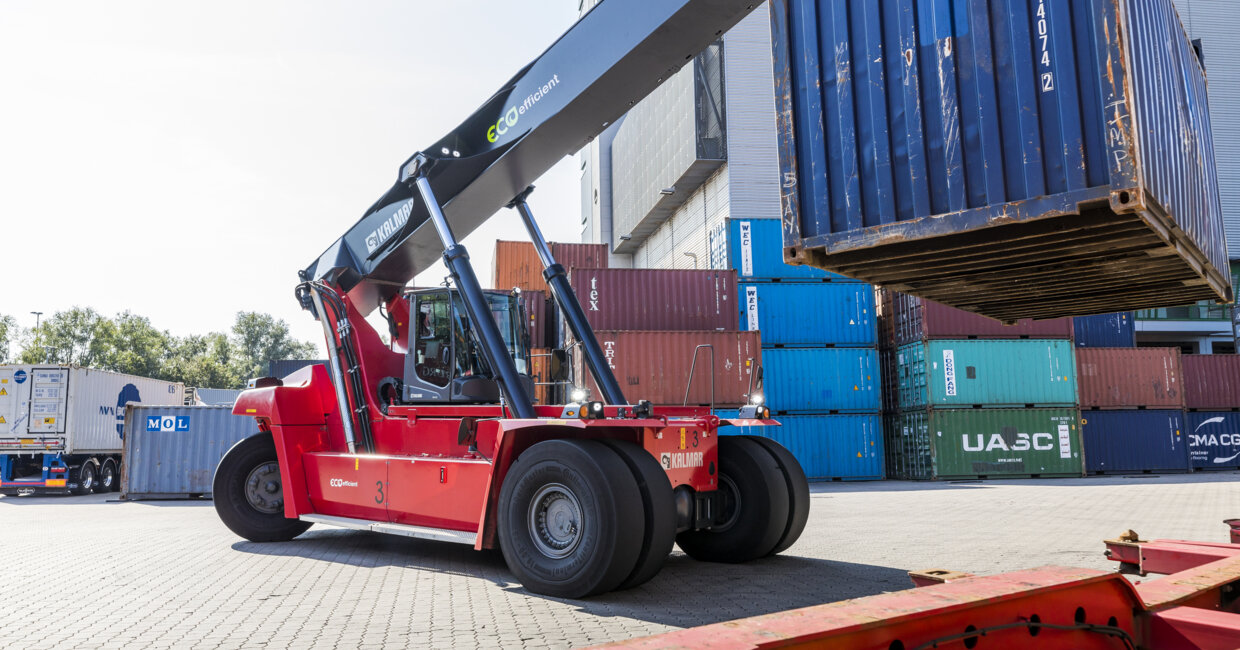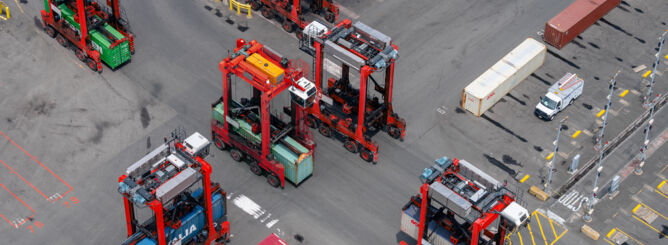Safety Doesn’t Compromise Efficiency
A familiar story heard far too often in the logistics sector: A simple safety solution costing about €500 could have prevented cargo handling damage which in the end ran to more than €100,000. Reluctance to spend on preventive measures was ultimately much costlier.
What can you do to make your cargo handling operations safer without compromising productivity? Kalmar experts highlight four key areas of safety: the yard, cargo handling equipment, containers and cargo and people.
Mette Kjems Bærentzen and Tobias Zink from Kalmar point out that “every move counts” – no matter how small – to achieve safety and productivity goals. Logistical accidents can result in injuries or even death, as well as delays and financial losses.
“In the final analysis, the required investment is very small in relation to operational gains and people care. Safety efficiency allows you to become more productive while maintaining the highest safety standards,” they believe.
For example, looking at insurance claim costs for container terminal operators, from the point of view of Kalmar’s customers, a lot of damage comes from truck and vehicle accidents, fire and bad handling.
Bærentzen and Zink point out that safety encompasses many aspects of the cargo handling operations – from the yard, equipment, cargo and people.
“Safety is like a fresh commodity – it requires constant monitoring, evaluation and updating,” says Bærentzen. “We are working in a busy industry that demands high productivity, so you need to take the time and invest the money needed to focus on safety.”
Yard challenges
Speaking about the safety issues related to logistics yard operations, Zink points out that all yards are different: some are small, compressed, and feature low visibility, while others are quite big with room for fast driving.
“In any case, traffic management procedures need to be in place and enforced. Good visibility can be a challenge, however, if space is limited.”
Instructions and warning signs at the yard need to be well thought out and executed in a smart way. Similarly, First Aid and heart defibrillator equipment need to be readily available in case they are needed.
Maximize both operations and safety
According to Zink, probably the biggest safety arena is cargo handling equipment.
“Safety cannot be stressed enough when it comes to this area.”
Such issues as equipment structural design, equipment inspection and monitoring, equipment functionality and use, as well as equipment service and maintenance are absolutely key for safe operations.
For instance, equipment structural design must follow the norms, standards and regulations set for the industry. Equipment functionality is equally important. For example, by using an overload protection system, the driver is able to spot dangerous load situations before a problem arises.
Reversing is a major part of every cargo handling move and most accidents occur during reversing. Reverse warning systems and cameras will improve both safety and cargo handling efficiency.
Always report a damaged container
Addressing the subject of containers and cargo, it is clear that uninterrupted container flow is the very lifeblood of logistics. Zink says that IMO’s Safety of Life at Sea solution (SOLAS) is helping by insisting that containers that are loaded on ships are properly weighed and monitored.
Similarly, load eccentricity is a concern. Containers need to be packed correctly, but because cargo placement inside the containers is blind, it has to be measured using load eccentricity in order to avoid accidents.
Damage does sometimes occur. A fairly common industry problem is inspection of the container undercarriage. Kalmar deploys a safe and effective method that allows easy inspection from all sides, including under the container.
People come first
The final, and most important, issue on experts’ safety agenda concerns keeping people safe. Bærentzen says that tools such as safety wear, safety reminders, standard routines and practices are mandatory in the business in order to ensure visibility, a prerequisite for safety.
Regarding the working environment and operating functionalities, such measures as safe access steps and handrails make a lot of sense. It may be a bigger investment, but there is also a bigger safety impact.
Bærentzen adds that driver training is always a very important component of safety, and on the plus side, it lowers fuel consumption and reduces wear and tear on the machines and equipment.
“Also, one good way to motivate the drivers is by monitoring, visualising and rewarding safe operating practices.”
Bærentzen and Zink say there is one final lesson to be learned about safety: never let your guard down thinking you are safe.
“Working with and applying safety – proactively and consistently – will allow you to become more productive while maintaining the highest safety levels.”
Four for safety
1. Safety involves many aspects of your cargo handling operations – the yard, equipment, cargo and people
2. Safety requires constant monitoring, evaluation and updating
3. The investment required is minor compared to operational gains and people care
4. Safety efficiency allows you to become more productive while maintaining the highest safety levels
Kalmar experts Mette Kjems Bærentzen, Product Portfolio Manager, Counterbalanced Container Handlers, and Tobias Zink, Terminal Business Sales Manager, discussed safety issues at length in a webinar hosted by Kalmar in September 2020 – a recording of the webinar is available at https://www.kalmarglobal.com/news--insights/webinars/safety-does-not-compromise-productivity/


